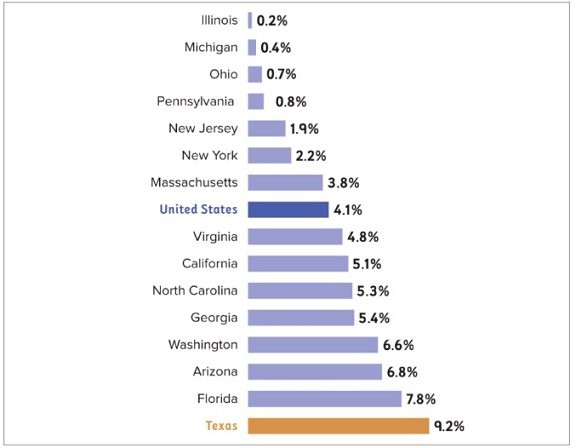Figure 1.3 in the text, Percentage Change in Population for the 15 Most Populous States, 2010-2015 SOURCE: Adapted from U.S. Census Bureau, Population Estimates, Table 2. Cumulative Estimates of Resident Population Change for the United States, Regions, States, and Puerto Rico and Region and State Rankings: April 1, 2010 to July 1, 2015; http://www.census.gov/popest/data/State/totals/2015/index.html.According to Figure 1.3 in the text, the population in Southern states, such as Texas,
SOURCE: Adapted from U.S. Census Bureau, Population Estimates, Table 2. Cumulative Estimates of Resident Population Change for the United States, Regions, States, and Puerto Rico and Region and State Rankings: April 1, 2010 to July 1, 2015; http://www.census.gov/popest/data/State/totals/2015/index.html.According to Figure 1.3 in the text, the population in Southern states, such as Texas,
A. is not growing.
B. is growing less than Northern states.
C. is growing at an above-average rate.
D. is growing at a below-average rate.
Answer: C
You might also like to view...
Who of the following is MOST likely to have liberal political views?
a. Stanley, a 75-year-old retiree b. Bethany, a 22-year-old college senior c. Anna, a 55-year-old registered nurse d. Michael, a 60-year-old bus driver
The responsibility to receive ambassadors and recognize foreign governments belongs to
a. the U.S. ambassador to the United Nations. b. the vice-president. c. the Secretary of State. d. Congress. e. the president.
The Clean Air Act of 1990 provided for the use of buying and selling of pollution permits to combat acid rain. What type of policy instrument does this describe?
A. market incentives B. public education C. privatization D. subsidies
The __________ problem occurs when people fail to join a group because they can get the benefits the group offers without contributing to the group's efforts
a. free-rider b. pluralist c. collective good d. group coordination